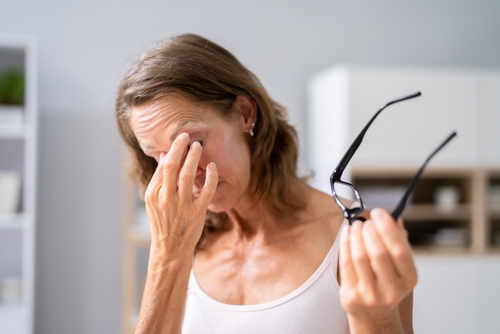
Do your dry, itchy eyes appear to worsen with every action you take? If so, you are not alone. Millions of individuals worldwide suffer from the prevalent ailment known as dry eye syndrome.
Among the numerous possible treatment options, low-level laser therapy (LLLT) may help you. An in-depth examination of LLLT, how it works, and what to expect from the treatment can inform your decision.
Understanding Dry Eye Syndrome
When your eyes produce insufficient tears or the tears are not of good quality, dry eye syndrome develops. Tears are essential to keep your eyes lubricated, protect against infections, and provide clear vision.
Various symptoms can result from decreased tear production or poor tear quality, including the following:
Redness
Itchiness
Burning
Blurry vision.
Sensitivity to light.
Gritty sensation in the eyes.
Prescription drugs, over-the-counter eye drops, or, in extreme circumstances, surgery can help manage the problem. Dry eye disease, however, is incurable.
What Is Low-level Laser Therapy?
A noninvasive method of treating dry eyes, laser light therapy (LLLT) is also called cold laser therapy or photobiomodulation. It stimulates cellular activity using low-level lasers or light-emitting diodes (LEDs). The low levels of light energy penetrate the skin and trigger a series of biological reactions in the cells.
How Does LLLT Work for Dry Eye Treatment?
Studies show LLLT can help treat dry eye syndrome by boosting tear production and enhancing tear quality. The laser energy stimulates the cells in the glands responsible for producing tears.
This triggers the release of cytokines and growth factors, helping increase the number of healthy cells in the gland. Consequently, there is an increase in tear output and an improvement in tear quality.
What to Expect During the Treatment
The LLLT procedure is a noninvasive, painless procedure frequently performed at an ophthalmologist's office. During the treatment, the patient sits in front of a machine that emits low-level lasers or LEDs. The provider applies the lasers to the area around the eyes for a few minutes. The patient might experience a slight warming sensation during the procedure, but it should not be uncomfortable.
The treatment usually consists of several sessions, each lasting roughly 20 minutes. Depending on the condition's severity and your response to treatment, you may need fewer or more sessions. After the first few sessions, your symptoms may start to improve. However, it might take a few weeks or months to see the treatment's full effects.
Is LLLT Safe?
The FDA approved the safe and noninvasive LLLT treatment for dry eye syndrome. Patients can continue their regular activities immediately after the treatment, which has negligible side effects.
Final Thoughts
Low-level laser therapy is a promising treatment option for people with dry eye syndrome. Clinical studies prove the procedure successfully boosts tear production and enhances tear quality.
It is a safe and noninvasive approach for people who do not respond well to other treatments. With this, the treatment may not be appropriate for everyone. Consult an ophthalmologist if you have dry eye syndrome symptoms to decide the best treatment.
For more on LLLT, visit Appleseed Eyecare at our office in Fort Wayne or Syracuse, Indiana. Call (260) 432-5502 or (574) 457-4476 to book an appointment today.










